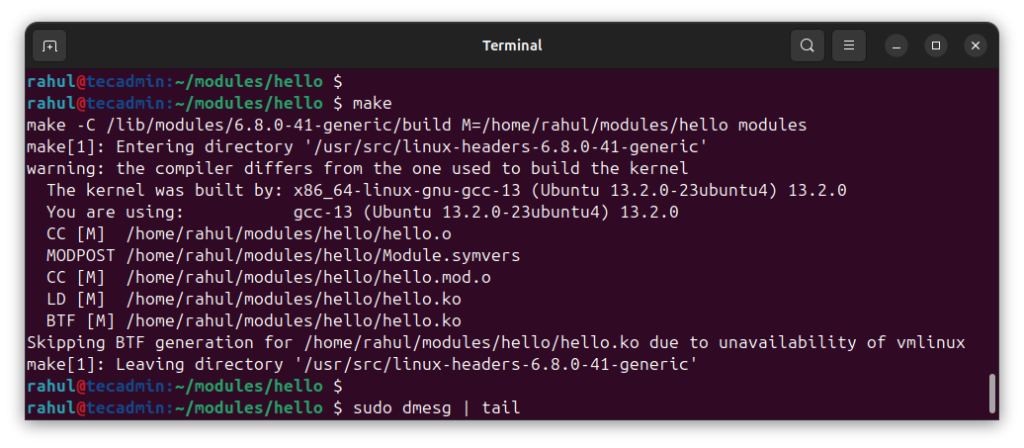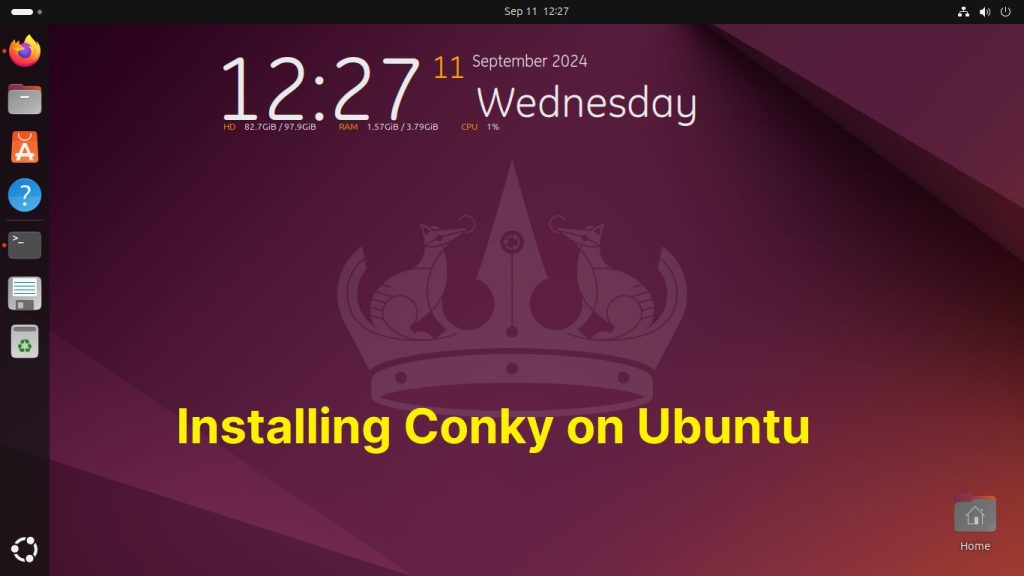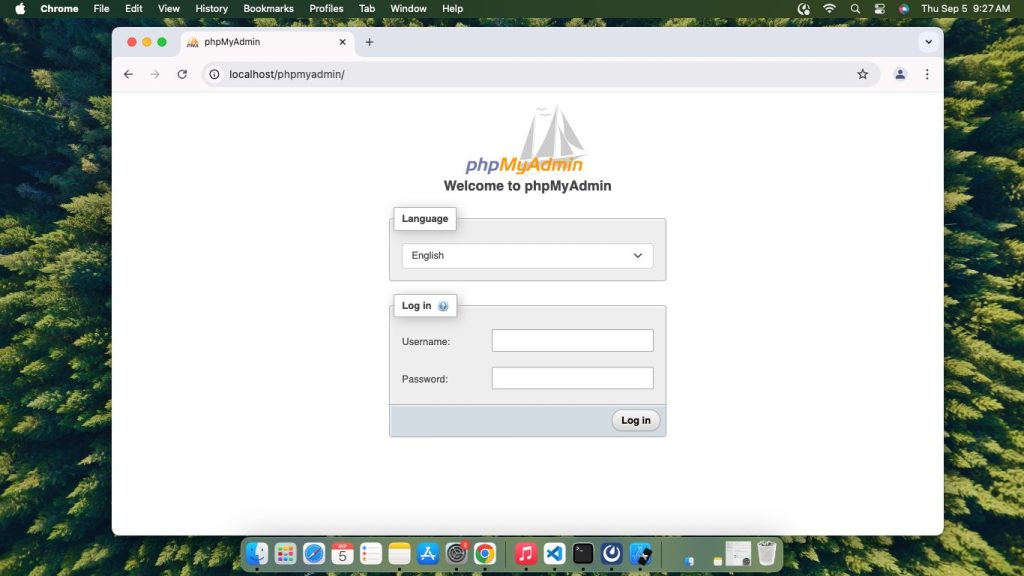When your SQL Server database becomes slow, one reason might be that its indexes are fragmented. To improve performance, you can rebuild or reorganize these indexes. Reindexing helps the database run faster by organizing the data more efficiently. In this article, we’ll show you how to use a simple PowerShell script to reindex all databases in SQL Server. Why Reindexing is Important SQL Server uses indexes to quickly find data. Over time, these indexes become fragmented, which means that the data is scattered around, making searches slower. Reindexing helps by organizing the data, improving the speed of queries and other…
Author: Rahul
Creating a kernel module in Linux might sound complex, but it’s quite manageable if broken down step by step. A kernel module is simply a piece of code that can be loaded into the Linux kernel to extend its functionality. Instead of modifying the kernel itself, you can create modules that add or modify features like device drivers or file systems. In this guide, we’ll walk you through the entire process of creating, compiling, testing, and deleting a simple kernel module. Don’t worry if you are a beginner; we will explain everything in a clear and easy way! Prerequisites Before…
Conky is a lightweight system monitoring tool that shows various system information on your desktop. It can display things like CPU usage, memory usage, network activity, weather updates, and much more. The best part is that it’s highly customizable, so you can make it look exactly how you want. If you use Ubuntu and want to keep an eye on your system’s performance, Conky is a great tool to use. This guide will walk you through how to install Conky, use Conky Manager for easier customization, and install Lua scripting to make it even more powerful. Step 1: Install Conky…
TOTP (Time-based One-Time Password) is a popular method for two-factor authentication (2FA). It generates a time-based code that adds extra security when logging into websites or applications. The totp-cli is a simple command-line tool that helps you manage TOTP tokens on your Ubuntu machine. This guide is perfect for beginners who want to install, configure, and use totp-cli to secure their accounts. We will walk you through the process of installing totp-cli, adding and managing TOTP secrets, and even how to back up and restore your TOTP tokens. By the end of this article, you’ll have a good understanding of…
In this guide, we will learn how to install phpMyAdmin on your macOS. We will use Homebrew to install Apache (the web server) and PHP, and then we will download phpMyAdmin manually from the official source. Let’s go step by step. Step 1: Install Homebrew Homebrew is a package manager for macOS that makes it easy to install software. Open Terminal on your Mac. Run this command to install Homebrew: /bin/bash -c “$(curl -fsSL https://raw.githubusercontent.com/Homebrew/install/HEAD/install.sh)” After installation, run this to make sure Homebrew is set up correctly: brew –version Step 2: Install Apache Apache is the web server that will…
Shell scripts are great tools that help you automate tasks on Unix-like operating systems. You can even make them look better by changing text color, font, and background color. This guide will show you how to do that in your shell scripts. What Are Shell Scripts? Shell scripts are just a list of commands that the shell (a program that runs commands) executes one after another. They help you automate tasks. A shell script can be as simple as showing some text or as complex as running a bunch of commands in a specific order. Most shell scripts are written…
Linux systems use both RAM and swap space to manage memory. RAM is the physical memory, while swap is a space on the hard drive used when RAM is full. By default, Linux can start using swap even if RAM is not full. You can change this by adjusting the swappiness value. How to Set Swappiness to Use Swap Only When RAM is Full If you want your system to use swap only when RAM is almost full, you should set the swappiness value to 1. Steps to Change the Swappiness Value Open a terminal. To temporarily set swappiness to…
If your application needs to provide real-time updates, like live notifications or chat features, it might use WebSockets. To make sure your Nginx server can handle these WebSocket connections, you need to configure it properly. This guide will show you how to do that step by step. I have an application running on https://example.com, and it uses WebSockets for live updates. The WebSocket connections look like this: wss://example.com/live-updates. To ensure that these connections work smoothly, you’ll need to adjust your Nginx configuration. Step 1: Enable WebSocket Support in Nginx Nginx supports WebSockets natively, so you don’t need to install extra…
The modern application uses Websockets to update application data in real time like live updates or chat. If the application is deployed with Apache, it needs to be set up correctly to manage WebSocket (wss://) requests. In this simple guide, we will show you how to configure Apache to handle these requests. You’ll learn how to enable the right modules and adjust your VirtualHost settings. By the end, your Apache server will be ready to handle WebSocket connections, keeping your application running smoothly. For example, I have an Next.JS application running on url https://example.com but the websocket requests looks like…
Customizing your Bash prompt to show the current Git branch name can make your coding life easier. When you work on different branches in Git, it’s helpful to see which branch you’re on directly in your terminal. This simple guide will show you how to add the Git branch name to your Bash prompt. You don’t need to be an expert; just follow the easy steps provided. A Guide to Show Git Branch Names in Your Bash Prompt Step 1: Open Your Terminal First, you need to open your terminal. Make sure you are logged in with correct user to…




